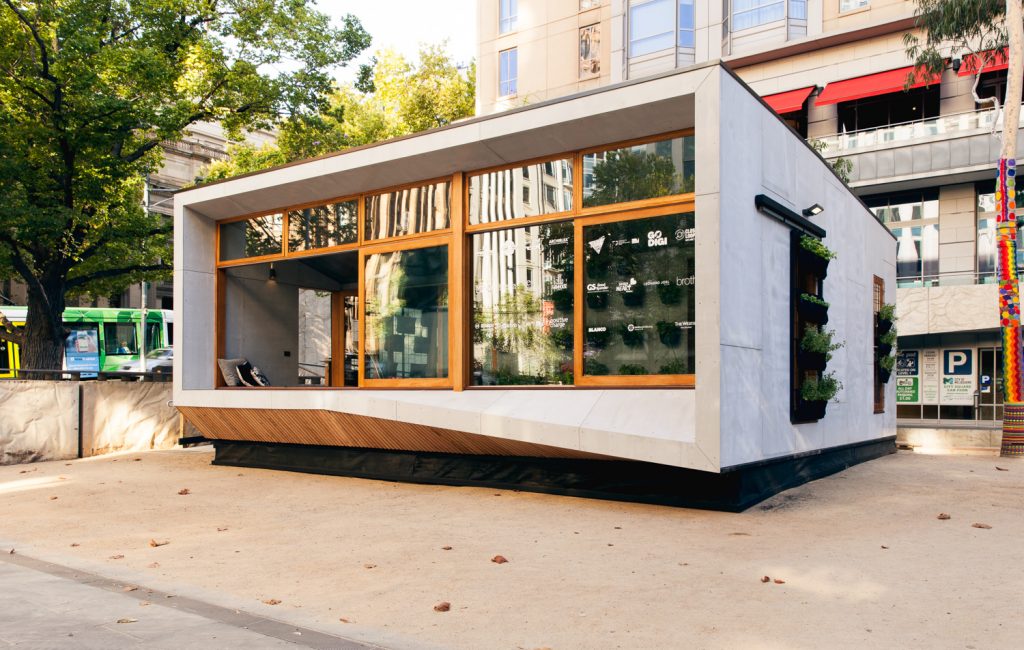The Advantages and Disadvantages of Zero Carbon Housing
Guest Post by Atanas Gjorgiev
Lowering the carbon footprint is now more important than ever because of the increasing concern about global climate change.
While going vegan, recycling and ditching single-use plastics are all ways to reduce your carbon footprint, you can make an even greater impact by building a zero-carbon home.
The term zero-carbon (or carbon-neutral) housing refers to highly energy-efficient homes that creates the same amount of renewable energy that it uses.
It meets the energy needs of the homeowner precisely without creating any carbon emissions. 
The housing sector plays a huge role in generating greenhouse gasses.
Emissions from the energy used in households accounts for 28% of global carbon emissions. According to the Paris Agreement of 2016 so reducing operational emissions would significantly decrease the risks of global climate change.
This is why building a carbon neutral home or renovating your existing one to meet carbon neutral standards is a good way to mitigate global warming.
But like all other housing options, zero emission homes have their advantages and downsides. It’s a good idea to be aware of both in order to determine whether this kind of housing is the right solution for you.
Eco-Friendly Housing
By producing the same amount of energy that is expended, carbon neutral homes have a positive impact on the environment.
For instance, these homes generate their own clean power with solar panels instead of fossil fuels.
Because solar energy doesn’t produce greenhouse gasses and it doesn’t pollute the water, these homes do not contribute to wildlife destruction and global warming.
Additionally, elements such as high-quality insulation, double-glazed and shaded windows, roof vents that allow hot air to escape and a hot water system located as close as possible to areas that need hot water can all contribute to a highly energy-efficient home.
By building a carbon neutral home with energy-efficient design elements your air-conditioning and heating systems won’t need to work as hard to meet your needs.
To further improve your home’s energy-efficiency, choose energy-efficient appliances and light bulbs, turn off and unplug electronics when you are not using them and recycle and buy recycled products.
Fresh Air
Many carbon neutral homes incorporate advanced energy-efficient ventilation systems that filter the outside air from pollutants and allergens.
The long term health effects from polluted air are quite serious and include heart disease, respiratory problems and cancer. By investing in an energy-efficient ventilation system, you’re not only reducing your carbon footprint but also doing something good for your health.
More Natural Light
A zero carbon house is also designed to allow as much natural daylight in as possible.
This way, you won’t depend as much on electrical lighting sources for your needs.
Additionally, the benefits of letting more natural sunlight in your home are numerous, including, but not limited to reduction of harmful bacteria, increase in vitamin D and improvement in the overall wellbeing.
Whenever natural light isn’t available, these homes rely on energy efficient LED lights that can create an open and welcoming home.
The Power of Silence
Noise pollution is linked with increased risk of hearing loss, stress and higher blood pressure.
Even ten minutes of silence a day can be beneficial for your health.
Unfortunately, when you live in the city you can’t stay away from noise not even for five minutes.
The good news is that a carbon neutral home can protect you from external sounds, while also producing a minimum amount of environmental noise inside.
High-quality and well-built insulation will not only significantly reduce energy loss, but it can also provide you with peace and quiet as it prevents noise from the outside from getting in.
In addition, the systems used for heating and cooling in zero carbon housing operate almost completely silent.
Durability and Low Maintenance
The design of carbon neutral homes is optimised to suit the weather conditions of the location.
Therefore, these homes are less susceptible to damage from the outside elements.
What’s more, with the advancement of construction technologies and materials used in low carbon homes, these structures are becoming more durable than standard homes.
In addition, carbon neutral homes are low maintenance.
For example, because they often come with an air system that filters the air from external pollutants, there’s less dust inside the house.
They also tend to have an integrated moisture barrier that prevents mould and damage from water.
All of this means less time spent on cleaning and maintenance.
Lower Bills
The cost of building a carbon neutral house can be jarring but considering these homes are energy-efficient and have a reduced risk of structural damage, in the long run, it will significantly decrease future expenses.
By producing your own energy, you won’t be strongly affected by the fluctuating prices of electricity and gas even if you have to purchase power from the grid occasionally.
Also, you can save on water bills by implementing machines, faucets and showers with water sense controls.
Smart Investment
Carbon neutral houses are a smart investment because they are the homes of the future.
They have a higher resale value than standard homes which means your investment will most definitely pay off in the future.
While all these benefits sound enticing, building a home is not something that should be taken lightly.
This is why it is important to be aware of the disadvantages of the zero carbon housing as well. Although there are few of them, they are worth mentioning.
A Relatively New Concept
Zero carbon housing, including apartments, is a relatively new concept compared to traditional housing.
This means that there are fewer experienced designers to successfully build a carbon neutral home and professionals are hard to find.
Higher Initial Cost
Although your investment will pay off eventually, the initial cost of a carbon neutral home is higher compared to the traditional houses.
For instance, the initial cost for an average conventional house is around $1393.55 per sqm according to the Australian Bureau of Statistics, but this figure doesn’t include design, permits, or features of a carbon neutral home.
Roughly put, you are looking at costs which are around 10% higher than the price of conventional homes.
However, it is likely that the cost will reduce over time thanks to the technological advancements.
Weather Dependence
For the solar panels to generate enough power for your home, they need direct sunlight.
A solar panel battery will help store extra energy overnight and for a cloudy or rainy day. if this goes on for longer, you will eventually experience loss of power.
That being said, if you still choose a carbon neutral home, it is smart to be grid-connected in order to have the option to get electricity from both the solar panels and the grid.
All things considered, it is safe to say that zero carbon housing is the future of homeownership.
The initial cost will reduce overtime and more benefits are yet to be discovered.
One thing is sure though, carbon neutral houses greatly reduce our carbon footprint and that is a significant step towards a healthier environment.